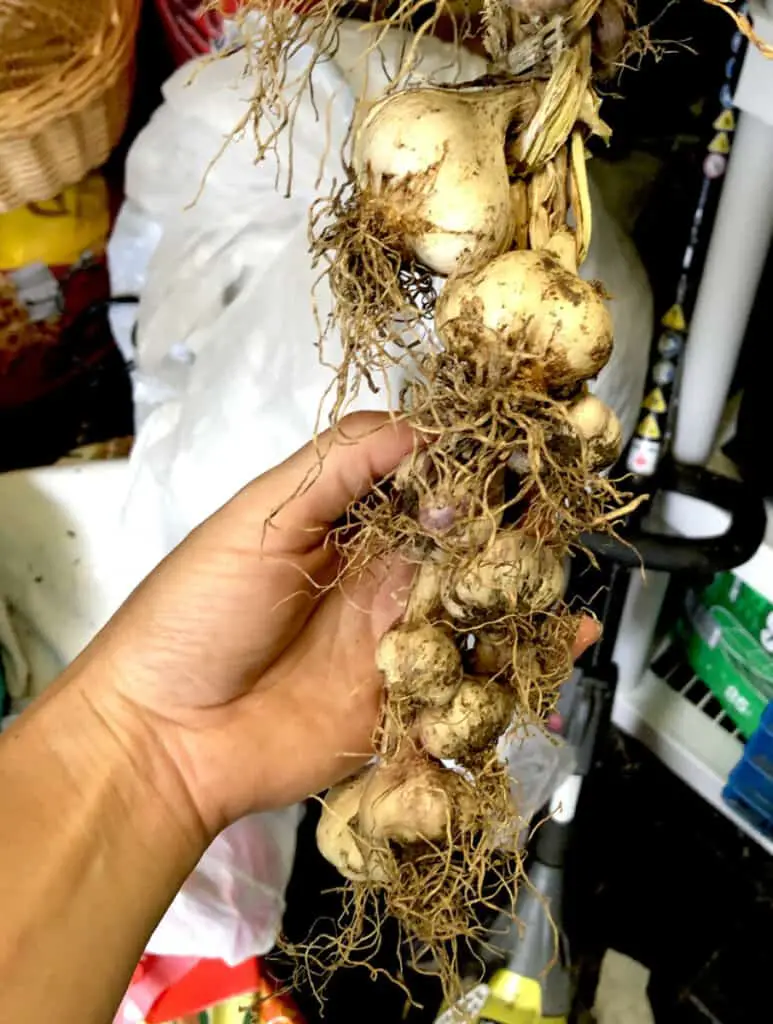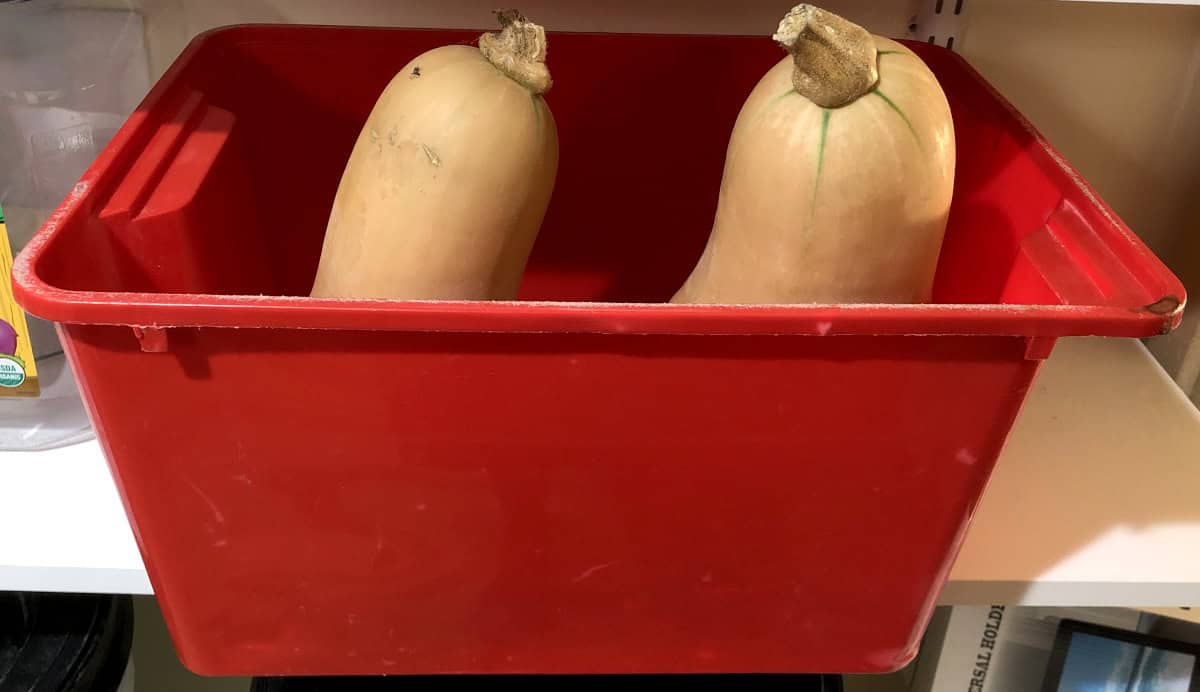As I plan my garden this spring, I can’t wait to plant seeds of vegetables that are the easiest to store. I enjoy growing edibles but when harvest comes it can get pretty overwhelming sometimes with all the work that accumulates around it. Therefore, my favorite veggies to grow are the ones that don’t require any refrigeration and last long stored just sitting on your pantry shelves.
Vegetables that have the longest shelf life for pantry storage are garlic, onions, winter squash, butternut squash, and spaghetti squash. These don’t require refrigeration. Dried beans and dried herbs can also sit on pantry shelves but are stored in plastic or glass containers to prevent moisture. Vegetables like potatoes and sweet potatoes can be stored together in containers in a dark and cool place. Root vegetables like carrots, parsnip, celeriac, and beets, can also be stored on your shelves but require a dark, cool place with humidity and are best stored buried in sand in containers or cardboard boxes. Apples can be also stored in cool, dark, and a bit humid place, and last for several months.

Vegetables that store well without refrigeration
Garlic, onions, winter squash, butternut squash, and spaghetti squash are stored very well for months without any refrigeration. Store them in a dark, dry place for the longest shelf life. Check on them periodically as you use them and if you see any with blemishes or signs of rotting take them out of storage immediately to stop spreading.

How to store root vegetables
Root vegetable store bests and last longest in a dark, cool but frost free and a bit humid space. Root vegetables like carrots, beets, parsnip, celeriac, potatoes, kohlrabi, rutabagas, and turnips, store best at temperatures above 32F but below 40F. All vegetables we store, roots included need to be checked on periodically, and those with any sign of rotting, or bad smell need to be removed from the storage.
How to store vegetables in homes long term
Storing vegetables in a cool, dark room with optimal humidity like a cellar would be ideal, however, not all of us are blessed with cellars. Even I wish I had one, but I don’t. Many of us live in apartments where a cellar or a dark, cool room below 40F is impossible. Therefore, choose a space closest to the ideal conditions. It can be a basement, outbuilding structure, garage, or a purposefully unheated guest room, a closet with exterior walls. Work with what you have available, choose vegetables that would keep best in the space you have, and do not forget to inspect them on regular basis. If you find you are running out of something, you can always purchase fresh veggies from your local farmers or store and fill in what you are missing.
What I have to work with is a basement that is cooler than the rest of the house and pretty dark as well. So, I selected a room in a basement that I turned into our storage space. It does not have ideal humid conditions, and it’s not as cool as 50F, but I can work with it. I can’t store all of my veggies there because for some it’s just too warm, but I can store some veggies that like it there. We all have to work with what we have. Vegetables that do best in my quite dry, dark basement with 68F are garlic, onion, potatoes, butternut squash, and spaghetti squash.
What is a root clamp?
This coming harvest season I am planning to store part of my root veggie harvest in a root clamp. A root clamp is an outdoor underground storage to keep root veggies in. It is generally dug in the ground deep enough for the veggies to stay fresh but not freeze and isolated on top with leaves, hay, loose or bagged leaves, or straw.
How to build a root clamp
Simply dig a hole 2-3 feet deep and wide, or as deep and wide so you would be able to fit what you want to store in it. Put your root veggies directly in the hole or you can place them in a container with holes on the bottom and sides for the moisture to release if accumulated. Alternate one row of veggies with one row of dirt or sand so the veggies don’t touch. Then cover the root clamp with soil and leaves for isolation and frost protection. A root clamp is a cellar alternative that works well for root vegetables. If you have a greenhouse, a hoop house, or a cold frame you can build a root clamp directly in them for extra protection during winter and from critters.
How do I store my garden harvest?
Most high-yielding fruits and vegetables to grow in pantry stocking garden

